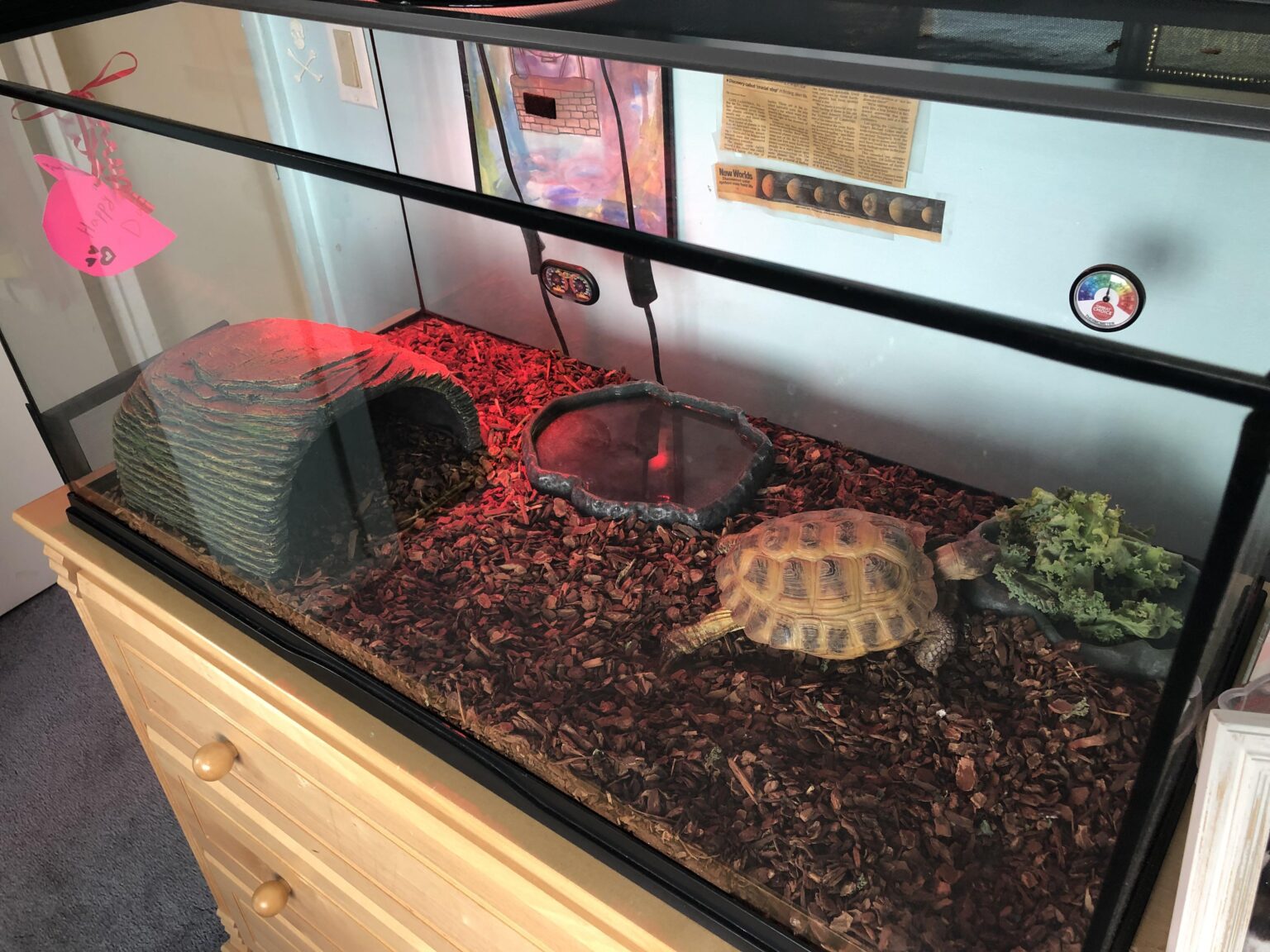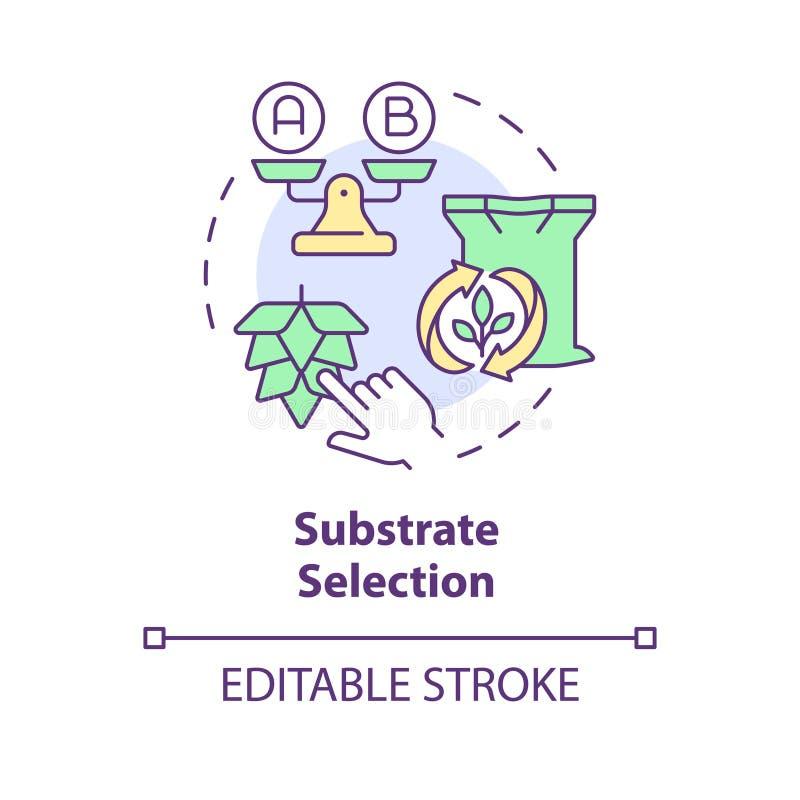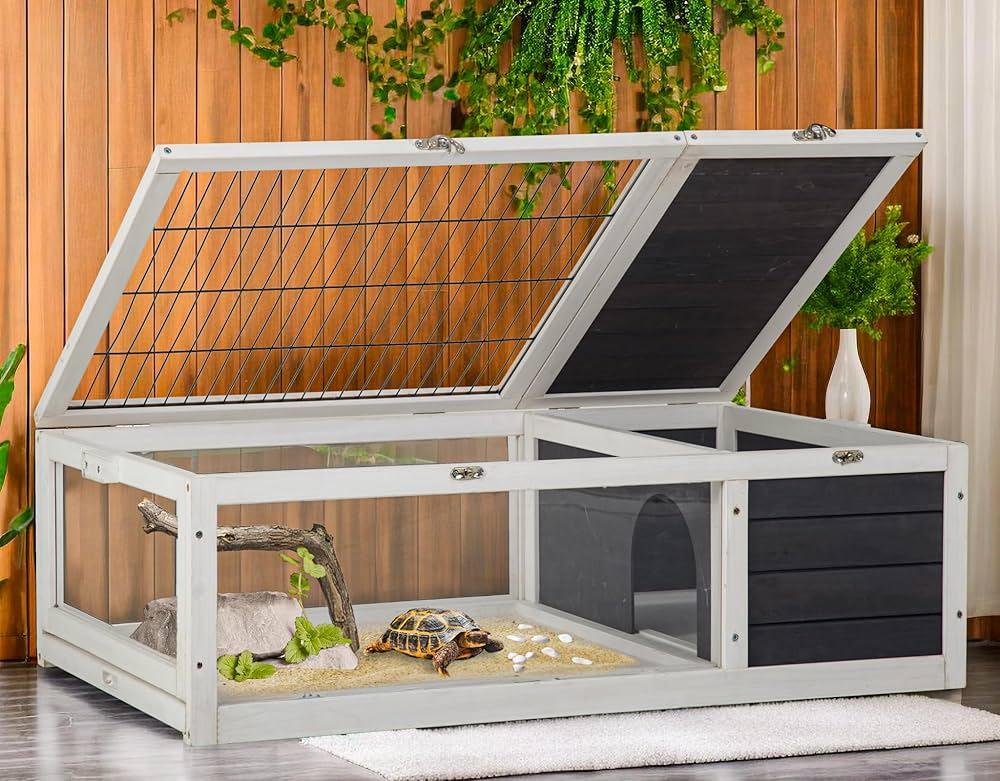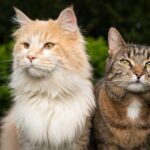Creating a perfect home for your Russian tortoise is not just a matter of providing shelter; it’s about crafting a vibrant environment that mirrors the natural habitats these resilient creatures thrive in. As one of the most popular pet tortoises, the Russian tortoise, with its charming demeanor and hardy nature, deserves an enclosure that caters to both its physical and psychological well-being. From selecting the right materials to understanding their unique habitat needs, each element plays a vital role in ensuring your shelled companion leads a healthy, happy life.
In this article, we will guide you through the essential components of a Russian tortoise enclosure, helping you design a space that reflects their natural instincts and promotes their well-being, while also enriching your experience as a tortoise owner. Whether you are a first-time keeper or looking to enhance an existing setup, join us on this journey to create the perfect sanctuary for your pet tortoise.
Table of Contents
- Designing an Optimal Habitat: Essential Elements for a Russian Tortoise Enclosure
- Substrate Selection: Choosing the Right Ground Material for Comfort and Safety
- Temperature and Lighting: Creating a Balanced Environment for Health and Well-Being
- Enrichment and Space: Fostering Natural Behaviors in Your Tortoises Home
- Q&A
- In Conclusion
Designing an Optimal Habitat: Essential Elements for a Russian Tortoise Enclosure
Creating a suitable habitat for your Russian tortoise requires careful consideration of several essential elements that mimic their natural environment. To begin with, the enclosure size should be sufficiently spacious, allowing your tortoise to roam and explore. A minimum of 4 feet by 2 feet is recommended for a single tortoise, but larger is always better. The flooring should be composed of substrates like organic topsoil or coconut coir to replicate their natural habitat while also ensuring good drainage. It’s crucial to include various hiding spots such as rocks, logs, and plants, which provide security and enrichment, allowing your tortoise to exhibit natural behaviors.
In addition to space and substrate, temperature control is vital for maintaining your tortoise’s health. A basking area should be created with a heat lamp, providing a temperature range of 90-100°F, while the cooler side of the enclosure should remain between 70-80°F. Humidity levels must also be monitored, ideally maintaining around 30-50%. Decorative elements can enhance the aesthetic appeal and function of the habitat. For example, a water dish should always be available, ensuring proper hydration. To summarize the key elements, here’s a quick reference table:
| Element | Recommendation |
|---|---|
| Enclosure Size | 4ft x 2ft minimum |
| Substrate | Organic topsoil or coconut coir |
| Temperature | 90-100°F basking; 70-80°F cooler |
| Humidity | 30-50% |
Substrate Selection: Choosing the Right Ground Material for Comfort and Safety
When creating a habitat for your Russian tortoise, selecting the right substrate is crucial for both their comfort and safety. A suitable substrate not only provides a natural environment but also aids in their digestion and promotes natural behaviors. Coconut coir, aspen shavings, and topsoil are popular choices as they facilitate burrowing and allow for thermal regulation. Additionally, these materials are soft on the tortoise’s feet, reducing the risk of injuries or discomfort over time.
It’s important to consider the moisture retention and ease of cleaning of your chosen substrate. For instance, coconut coir is excellent for moisture retention without becoming soggy, while aspen shavings allow for good airflow and easy spot cleaning. On the other hand, topsoil can provide a more naturalistic look but may require more frequent changes to ensure cleanliness. Here’s a quick comparison of popular substrates:
| Substrate Type | Moisture Retention | Ease of Cleaning | Comfort Level |
|---|---|---|---|
| Coconut Coir | High | Moderate | Soft |
| Aspen Shavings | Low | High | Very Soft |
| Topsoil | Variable | Low | Natural |
Temperature and Lighting: Creating a Balanced Environment for Health and Well-Being
To foster a thriving environment for your Russian tortoise, achieving the right balance of temperature and lighting is essential. These reptiles require a temperature gradient within their enclosure, which allows them to regulate their body heat. A basking area should be maintained at around 90-95°F (32-35°C), providing a cozy spot for your tortoise to absorb warmth. In contrast, the cooler end of the habitat should remain between 70-80°F (21-27°C). Utilizing ceramic heat emitters, heat lamps, or under-tank heaters can help you maintain these temperatures effectively. Make sure to monitor the ambient temperature with a reliable thermometer to ensure a consistent climate.
Lighting plays a pivotal role not only in thermoregulation but also in the overall health of your tortoise. Incorporating a UVB light source is crucial, as it enables your tortoise to synthesize vitamin D3, aiding in calcium absorption and bone health. Aim for a 12-14 hour light cycle to mimic the natural day-night rhythm. Ensure the UVB bulb is replaced every 6-12 months, as its effectiveness diminishes over time, even when the bulb still emits light. A combination of natural and artificial lighting can enhance the enclosure’s atmosphere and contribute to your pet’s happiness and well-being.
Enrichment and Space: Fostering Natural Behaviors in Your Tortoises Home
In designing a habitat for your Russian tortoise, it’s essential to recreate an environment that mirrors their natural conditions, allowing them to exhibit instinctual behaviors. Start by incorporating a variety of substrates such as coconut coir, topsoil, or sand, which will encourage burrowing—a natural behavior for these creatures. Additionally, consider the following elements to enhance their environment:
- Hideaway Spots: Use rocks or wooden logs to create shelters that offer security and comfort.
- Climbing Structures: Include ramps or small hills to encourage climbing and exploration.
- Water Features: A shallow dish for drinking or soaking allows them to hydrate and helps with shedding.
- Varied Lighting: Provide areas of both shade and sunlight to regulate their body temperature effectively.
Creating distinct zones within the enclosure can also contribute to the overall enrichment of your tortoise’s habitat. By establishing areas for feeding, basking, and hiding, you encourage natural foraging and sunbathing behaviors. Consider using a simple table to outline the resources you might implement, ensuring each zone serves a purpose in your tortoise’s daily life:
| Zone | Purpose | Recommended Items |
|---|---|---|
| Basking Area | Heat regulation and Vitamin D synthesis | Heat lamp, flat stones |
| Feeding Zone | Nutrition and foraging | Veggies, greens, and feeding dish |
| Hide Zone | Security and stress relief | Hides made from clay pots or logs |
Q&A
Q&A: Creating the Perfect Home for Your Russian Tortoise
Q1: What are the essential components of a Russian tortoise enclosure?
A1: A well-designed Russian tortoise enclosure includes several key components: a spacious habitat with adequate floor space—ideally 4×2 feet or larger—substrate such as coconut coir or aspen shavings for burrowing, hiding spots like logs or tunnels, and a basking area with a heat lamp. Additionally, include a shallow water dish and a variety of edible plants for forage and nutrition.
Q2: What temperature range is ideal for a Russian tortoise?
A2: Russian tortoises thrive in temperatures between 75°F and 85°F (24°C – 29°C) in their cooler areas and 90°F to 100°F (32°C – 38°C) under the basking lamp. A temperature gradient allows them to regulate their body heat effectively.
Q3: How important is humidity for a Russian tortoise’s enclosure?
A3: Humidity plays a crucial role in the health of a Russian tortoise. They prefer a humidity level of about 30-50%. While they are desert-dwelling creatures, maintaining appropriate humidity helps prevent respiratory issues and aids in shedding. A well-ventilated enclosure with occasional misting can help achieve this balance.
Q4: Can I keep more than one Russian tortoise in the same enclosure?
A4: While it’s possible to house multiple Russian tortoises together, it comes with challenges. Territorial disputes may arise, especially among males, leading to stress or injury. If you choose to house them together, ensure the enclosure is spacious, provide plenty of hiding spots, and monitor their interactions closely.
Q5: What type of lighting is best for a Russian tortoise?
A5: A combination of UVB lighting and heat is essential for Russian tortoises. UVB light helps them synthesize Vitamin D3, crucial for calcium absorption and overall health. Aim for 10-12 hours of UVB exposure daily, and replace bulbs every 6-12 months to maintain effectiveness.
Q6: What do I need to consider regarding the enclosure’s materials?
A6: When choosing materials for your Russian tortoise enclosure, opt for non-treated wood or glass for the walls to ensure durability and safety. Ensure that all materials are escape-proof, as tortoises are adept at finding their way out of enclosures. Avoid using plastic that may harbor bacteria or pose choking hazards.
Q7: How can I enrich my Russian tortoise’s environment?
A7: Enrichment enhances a tortoise’s quality of life. Introduce varied hiding spots, climbing structures, and different textures in the substrate. Regularly rotate their forage items and introduce safe plants to encourage natural foraging behaviors. You can also create a mini digging area to stimulate their natural instincts.
Q8: How can I maintain a clean and healthy enclosure for my tortoise?
A8: Regular maintenance is vital. Spot clean daily by removing waste, and perform a more thorough cleaning weekly. Change the substrate when it becomes soiled, and disinfect hiding spots and water dishes with pet-safe cleaners. Regular monitoring for signs of illness will also help keep your tortoise healthy.
Q9: What should I feed my Russian tortoise in their enclosure?
A9: Provide a variety of leafy greens, weeds, and occasional vegetables. Good choices include dandelion greens, collard greens, and prickly pear cactus. Avoid high oxalic acid foods, like spinach, and offer calcium-rich foods to support their shell health. Fresh food should be offered daily, with occasional treats to keep them engaged.
Q10: How often should I check on my tortoise’s habitat?
A10: Regular checks are essential. Observe your Russian tortoise daily for signs of stress or health issues, and inspect the enclosure for cleanliness and temperature fluctuations at least once a week. Monthly deep cleans and an annual review of the habitat design will keep your tortoise’s home safe and comfortable.
With these guidelines, you can create a vibrant and healthy habitat for your Russian tortoise, ensuring they thrive in their new home!
In Conclusion
crafting the ideal enclosure for your Russian tortoise is not just a task; it’s an enriching journey that fosters the well-being and happiness of your cherished pet. By considering their natural habitat, dietary needs, and behavioral tendencies, you can create a sanctuary that mirrors the warmth and diversity of their native environment. Remember, every element—from substrate to lighting—plays a pivotal role in ensuring your tortoise thrives. With patience and dedication, you’ll not only enhance their quality of life but also deepen the bond you share. So, gather your materials, unleash your creativity, and embark on the adventure of building a perfect home for your shelled companion. Your Russian tortoise will thank you for it, one happy crawl at a time.



















